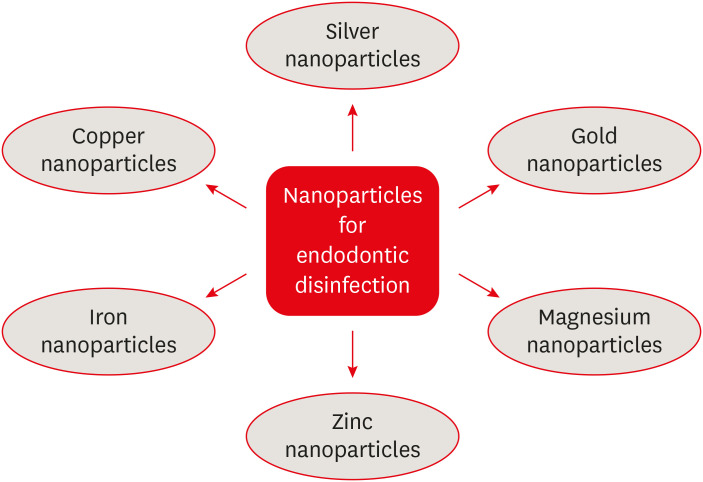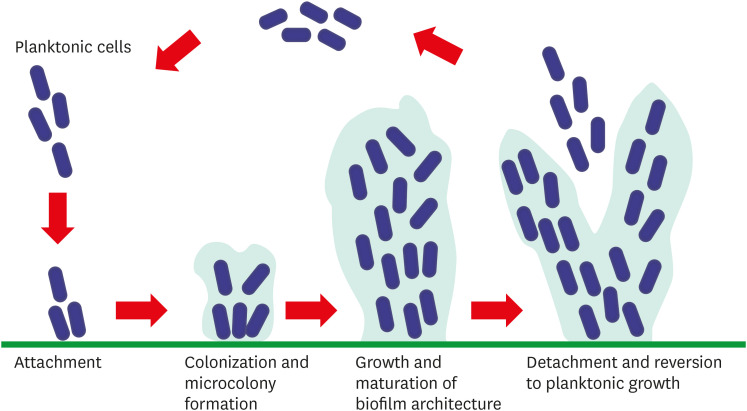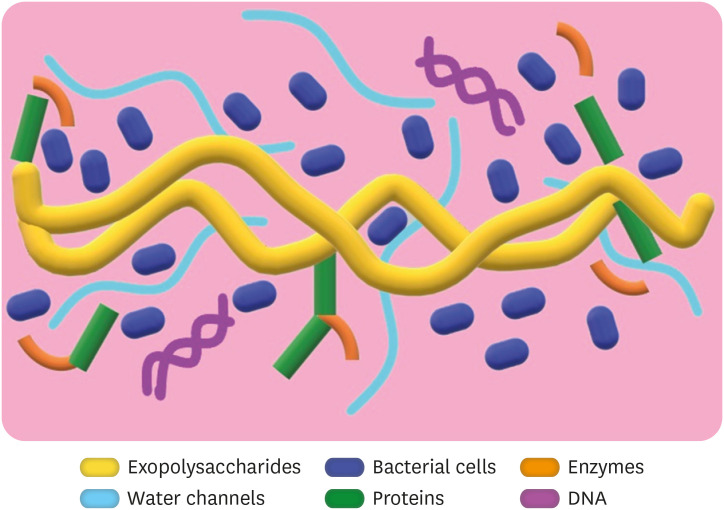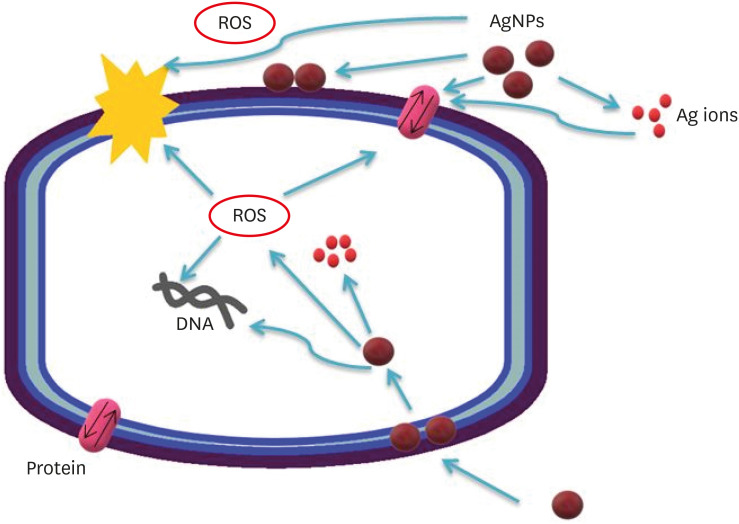Restor Dent Endod.
2021 Aug;46(3):e38. 10.5395/rde.2021.46.e38.
Silver nanoparticles in endodontics: recent developments and applications
- Affiliations
-
- 1Department of Endodontics, Ankara University Faculty of Dentistry, Ankara, Turkey
- 2Department of Dental Hygiene Research & Development in Health & Care, Artevelde University of Applied Sciences, Ghent, Belgium
- 3Department of Pharmaceutical Technology, Ankara University Faculty of Pharmacy, Ankara, Turkey
- 4Department of Dentomaxillofacial Radiology, Ankara University Faculty of Dentistry, Ankara, Turkey
- KMID: 2548082
- DOI: http://doi.org/10.5395/rde.2021.46.e38
Abstract
- The elimination of endodontic biofilms and the maintenance of a leak-proof canal filling are key aspects of successful root canal treatment. Several materials have been introduced to treat endodontic disease, although treatment success is limited by the features of the biomaterials used. Silver nanoparticles (AgNPs) have been increasingly considered in dental applications, especially endodontics, due to their high antimicrobial activity. For the present study, an electronic search was conducted using MEDLINE (PubMed), the Cochrane Central Register of Controlled Trials (CENTRAL), Google Scholar, and EMBASE. This review provides insights into the unique characteristics of AgNPs, including their chemical, physical, and antimicrobial properties; limitations; and potential uses. Various studies involving different application methods of AgNPs were carefully examined. Based on previous clinical studies, the synthesis, means of obtaining, usage conditions, and potential cytotoxicity of AgNPs were evaluated. The findings indicate that AgNPs are effective antimicrobial agents for the elimination of endodontic biofilms.
Figure
Reference
-
1. Vestby LK, Grønseth T, Simm R, Nesse LL. Bacterial biofilm and its role in the pathogenesis of disease. Antibiotics (Basel). 2020; 9:59.
Article2. Neelakantan P, Romero M, Vera J, Daood U, Khan AU, Yan A, Cheung GS. Biofilms in endodontics-current status and future directions. Int J Mol Sci. 2017; 18:1748.
Article3. Mensi M, Scotti E, Sordillo A, Agosti R, Calza S. Plaque disclosing agent as a guide for professional biofilm removal: a randomized controlled clinical trial. Int J Dent Hyg. 2020; 18:285–294. PMID: 32348624.
Article4. Tolker-Nielsen T. Biofilm development. Microbiol Spectr. 2015; 3:MB-0001–MB-2014.
Article5. Abusrewil S, Alshanta OA, Albashaireh K, Alqahtani S, Nile CJ, Scott JA, McLean W. Detection, treatment and prevention of endodontic biofilm infections: what's new in 2020? Crit Rev Microbiol. 2020; 46:194–212. PMID: 32233822.
Article6. Haapasalo M, Shen Y, Wang Z, Gao Y. Irrigation in endodontics. Br Dent J. 2014; 216:299–303. PMID: 24651335.
Article7. García-Guerrero C, Delgado-Rodríguez CE, Molano-González N, Pineda-Velandia GA, Marín-Zuluaga DJ, Leal-Fernandez MC, Gutmann JL. Predicting the outcome of initial non-surgical endodontic procedures by periapical status and quality of root canal filling: a cohort study. Odontology. 2020; 108:697–703. PMID: 32078100.
Article8. Schmalz G, Hickel R, van Landuyt KL, Reichl FX. Nanoparticles in dentistry. Dent Mater. 2017; 33:1298–1314. PMID: 28951037.
Article9. Kaur P, Luthra R. Silver nanoparticles in dentistry: an emerging trend. SRM J Res Dent Sci. 2016; 7:162.
Article10. Abdal Dayem A, Hossain MK, Lee SB, Kim K, Saha SK, Yang GM, Choi HY, Cho SG. The role of reactive oxygen species (ROS) in the biological activities of metallic nanoparticles. Int J Mol Sci. 2017; 18:120.
Article11. Tang S, Zheng J. Antibacterial activity of silver nanoparticles: structural effects. Adv Healthc Mater. 2018; 7:e1701503. PMID: 29808627.
Article12. Prabhu S, Poulose EK. Silver nanoparticles: mechanism of antimicrobial action, synthesis, medical applications, and toxicity effects. Int Nano Lett. 2012; 2:32.
Article13. Stohs SJ, Bagchi D. Oxidative mechanisms in the toxicity of metal ions. Free Radic Biol Med. 1995; 18:321–336. PMID: 7744317.
Article14. Samiei M, Farjami A, Dizaj SM, Lotfipour F. Nanoparticles for antimicrobial purposes in endodontics: a systematic review of in vitro studies. Mater Sci Eng C. 2016; 58:1269–1278.
Article15. Salata O. Applications of nanoparticles in biology and medicine. J Nanobiotechnology. 2004; 2:3. PMID: 15119954.16. Du Q, Fu M, Zhou Y, Cao Y, Guo T, Zhou Z, Li M, Peng X, Zheng X, Li Y, Xu X, He J, Zhou X. Sucrose promotes caries progression by disrupting the microecological balance in oral biofilms: an in vitro study. Sci Rep. 2020; 10:2961. PMID: 32076013.17. Pamp SJ, Gjermansen M, Tolker-Nielsen T. The biofilm mode of life: mechanisms and adaptation. Biosci Horiz. 2007; 16:37–69.18. Teves A, Blanco D, Casaretto M, Torres J, Alvarado D, Jaramillo DE. Effectiveness of different disinfection techniques of the root canal in the elimination of a multi-species biofilm. J Clin Exp Dent. 2019; 11:e978–e983. PMID: 31700570.
Article19. Nwodo UU, Green E, Okoh AI. Bacterial exopolysaccharides: functionality and prospects. Int J Mol Sci. 2012; 13:14002–14015. PMID: 23203046.
Article20. Sutherland I. Biofilm exopolysaccharides: a strong and sticky framework. Microbiology (Reading). 2001; 147:3–9. PMID: 11160795.
Article21. Lynch DJ, Fountain TL, Mazurkiewicz JE, Banas JA. Glucan-binding proteins are essential for shaping Streptococcus mutans biofilm architecture. FEMS Microbiol Lett. 2007; 268:158–165. PMID: 17214736.
Article22. Lemos J, Palmer S, Zeng L, Wen Z, Kajfasz J, Freires I, Abranches J, Brady L, editors. The biology of Streptococcus mutans. 3rd ed. Gram-Positive Pathogens;2019. p. 435–448.23. Donlan RM, Costerton JW. Biofilms: survival mechanisms of clinically relevant microorganisms. Clin Microbiol Rev. 2002; 15:167–193. PMID: 11932229.
Article24. Jhajharia K, Parolia A, Shetty KV, Mehta LK. Biofilm in endodontics: a review. J Int Soc Prev Community Dent. 2015; 5:1–12. PMID: 25767760.
Article25. Abisado RG, Benomar S, Klaus JR, Dandekar AA, Chandler JR. Bacterial quorum sensing and microbial community interactions. MBio. 2018; 9:e02331-17. PMID: 29789364.
Article26. Schluter J, Schoech AP, Foster KR, Mitri S. The evolution of quorum sensing as a mechanism to infer kinship. PLOS Comput Biol. 2016; 12:e1004848. PMID: 27120081.
Article27. Koo H, Allan RN, Howlin RP, Stoodley P, Hall-Stoodley L. Targeting microbial biofilms: current and prospective therapeutic strategies. Nat Rev Microbiol. 2017; 15:740–755. PMID: 28944770.
Article28. Stuart CH, Schwartz SA, Beeson TJ, Owatz CB. Enterococcus faecalis: its role in root canal treatment failure and current concepts in retreatment. J Endod. 2006; 32:93–98. PMID: 16427453.
Article29. Saatchi M, Shokraneh A, Navaei H, Maracy MR, Shojaei H. Antibacterial effect of calcium hydroxide combined with chlorhexidine on Enterococcus faecalis: a systematic review and meta-analysis. J Appl Oral Sci. 2014; 22:356–365. PMID: 25466470.
Article30. Yu MK, Kim MA, Rosa V, Hwang YC, Del Fabbro M, Sohn WJ, Min KS. Role of extracellular DNA in Enterococcus faecalis biofilm formation and its susceptibility to sodium hypochlorite. J Appl Oral Sci. 2019; 27:e20180699. PMID: 31411265.
Article31. Barnes AM, Ballering KS, Leibman RS, Wells CL, Dunny GM. Enterococcus faecalis produces abundant extracellular structures containing DNA in the absence of cell lysis during early biofilm formation. MBio. 2012; 3:e00193–e12. PMID: 22829679.32. Chang JD, Wallace AG, Foster EE, Kim SJ. Peptidoglycan compositional analysis of Enterococcus faecalis biofilm by stable isotope labeling by amino acids in a bacterial culture. Biochemistry. 2018; 57:1274–1283. PMID: 29368511.
Article33. Bulacio ML, Galván LR, Gaudioso C, Cangemi R, Erimbaue MI. Enterococcus Faecalis biofilm. Formation and development in vitro observed by scanning electron microscopy. Acta Odontol Latinoam. 2015; 28:210–214. PMID: 27095620.34. Kuang X, Chen V, Xu X. Novel approaches to the control of oral microbial biofilms. BioMed Res Int. 2018; 2018:6498932. PMID: 30687755.
Article35. Rabin N, Zheng Y, Opoku-Temeng C, Du Y, Bonsu E, Sintim HO. Agents that inhibit bacterial biofilm formation. Future Med Chem. 2015; 7:647–671. PMID: 25921403.
Article36. Veerapandian M, Yun K. Functionalization of biomolecules on nanoparticles: specialized for antibacterial applications. Appl Microbiol Biotechnol. 2011; 90:1655–1667. PMID: 21523475.
Article37. Shrestha A, Kishen A. Antibacterial nanoparticles in endodontics: a review. J Endod. 2016; 42:1417–1426. PMID: 27520408.38. Khezerlou A, Alizadeh-Sani M, Azizi-Lalabadi M, Ehsani A. Nanoparticles and their antimicrobial properties against pathogens including bacteria, fungi, parasites and viruses. Microb Pathog. 2018; 123:505–526. PMID: 30092260.
Article39. Cao W, Zhang Y, Wang X, Li Q, Xiao Y, Li P, Wang L, Ye Z, Xing X. Novel resin-based dental material with anti-biofilm activity and improved mechanical property by incorporating hydrophilic cationic copolymer functionalized nanodiamond. J Mater Sci Mater Med. 2018; 29:162. PMID: 30357538.
Article40. Saafan A, Zaazou MH, Sallam MK, Mosallam O, El Danaf HA. Assessment of photodynamic therapy and nanoparticles effects on caries models. Open Access Maced J Med Sci. 2018; 6:1289–1295. PMID: 30087739.
Article41. Bukhari S, Kim D, Liu Y, Karabucak B, Koo H. Novel endodontic disinfection approach using catalytic nanoparticles. J Endod. 2018; 44:806–812. PMID: 29426645.
Article42. Rajeshkumar S, Bharath LV. Mechanism of plant-mediated synthesis of silver nanoparticles - A review on biomolecules involved, characterisation and antibacterial activity. Chem Biol Interact. 2017; 273:219–227. PMID: 28647323.
Article43. Lee SH, Jun BH. Silver nanoparticles: synthesis and application for nanomedicine. Int J Mol Sci. 2019; 20:865.
Article44. Zhang XF, Liu ZG, Shen W, Gurunathan S. Silver nanoparticles: synthesis, characterization, properties, applications, and therapeutic approaches. Int J Mol Sci. 2016; 17:1534.
Article45. Singh R, Shedbalkar UU, Wadhwani SA, Chopade BA. Bacteriagenic silver nanoparticles: synthesis, mechanism, and applications. Appl Microbiol Biotechnol. 2015; 99:4579–4593. PMID: 25952110.
Article46. Mousavi SM, Hashemi SA, Ghasemi Y, Atapour A, Amani AM, Savar Dashtaki A, Babapoor A, Arjmand O. Green synthesis of silver nanoparticles toward bio and medical applications: review study. Artif Cells Nanomed Biotechnol. 2018; 46(sup3):S855–S872. PMID: 30328732.
Article47. Patil MP, Kim GD. Eco-friendly approach for nanoparticles synthesis and mechanism behind antibacterial activity of silver and anticancer activity of gold nanoparticles. Appl Microbiol Biotechnol. 2017; 101:79–92. PMID: 27915376.
Article48. Hong X, Wen J, Xiong X, Hu Y. Shape effect on the antibacterial activity of silver nanoparticles synthesized via a microwave-assisted method. Environ Sci Pollut Res Int. 2016; 23:4489–4497. PMID: 26511259.
Article49. Mie R, Samsudin MW, Din LB, Ahmad A, Ibrahim N, Adnan SN. Synthesis of silver nanoparticles with antibacterial activity using the lichen Parmotrema praesorediosum . Int J Nanomedicine. 2014; 9:121–127. PMID: 24379670.50. Tang S, Zheng J. Antibacterial activity of silver nanoparticles: structural effects. Adv Healthc Mater. 2018; 7:e1701503. PMID: 29808627.
Article51. Raffi M, Hussain F, Bhatti TM, Akhter JI, Hameed A, Hasan MM. Antibacterial characterization of silver nanoparticles against E. coli ATCC-15224. J Mater Sci Technol. 2008; 24:192–196.52. Bapat RA, Chaubal TV, Joshi CP, Bapat PR, Choudhury H, Pandey M, Gorain B, Kesharwani P. An overview of application of silver nanoparticles for biomaterials in dentistry. Mater Sci Eng C. 2018; 91:881–898.
Article53. Radzig MA, Nadtochenko VA, Koksharova OA, Kiwi J, Lipasova VA, Khmel IA. Antibacterial effects of silver nanoparticles on gram-negative bacteria: influence on the growth and biofilms formation, mechanisms of action. Colloids Surf B Biointerfaces. 2013; 102:300–306. PMID: 23006569.
Article54. Shrivastava S, Bera T, Singh SK, Singh G, Ramachandrarao P, Dash D. Characterization of antiplatelet properties of silver nanoparticles. ACS Nano. 2009; 3:1357–1364. PMID: 19545167.
Article55. Manikprabhu D, Lingappa K. Antibacterial activity of silver nanoparticles against methicillin-resistant Staphylococcus aureus synthesized using model Streptomyces sp. pigment by photo-irradiation method. J Pharm Res. 2013; 6:255–260.
Article56. Zawadzka K, Kądzioła K, Felczak A, Wrońska N, Piwoński I, Kisielewska A, Lisowska K. Surface area or diameter–which factor really determines the antibacterial activity of silver nanoparticles grown on TiO 2 coatings? New J Chem. 2014; 38:3275–3281.
Article57. Qing Y, Cheng L, Li R, Liu G, Zhang Y, Tang X, Wang J, Liu H, Qin Y. Potential antibacterial mechanism of silver nanoparticles and the optimization of orthopedic implants by advanced modification technologies. Int J Nanomedicine. 2018; 13:3311–3327. PMID: 29892194.
Article58. Markowska K, Grudniak AM, Wolska KI. Silver nanoparticles as an alternative strategy against bacterial biofilms. Acta Biochim Pol. 2013; 60:523–530. PMID: 24432308.
Article59. Fissan H, Ristig S, Kaminski H, Asbach C, Epple M. Comparison of different characterization methods for nanoparticle dispersions before and after aerosolization. Anal Methods. 2014; 6:7324–7334.
Article60. Blanchard PY, Sun T, Yu Y, Wei Z, Matsui H, Mirkin MV. Scanning electrochemical microscopy study of permeability of a thiolated aryl multilayer and imaging of single nanocubes anchored to it. Langmuir. 2016; 32:2500–2508. PMID: 26925511.
Article61. Eaton P, Batziou K. Artifacts and practical issues in atomic force microscopy. Methods Mol Biol. 2019; 1886:3–28. PMID: 30374859.
Article62. Leung AB, Suh KI, Ansari RR. Particle-size and velocity measurements in flowing conditions using dynamic light scattering. Appl Opt. 2006; 45:2186–2190. PMID: 16607982.
Article63. Das R, Nath S, Chakdar D, Gope G, Bhattacharjee R. Preparation of silver nanoparticles and their characterization. J Nanotechnol. 2009; 5:1–6.64. Paddock SW, Eliceiri KW. Laser scanning confocal microscopy: history, applications, and related optical sectioning techniques. Methods Mol Biol. 2014; 1075:9–47. PMID: 24052346.
Article65. Lotfi M, Vosoughhosseini S, Ranjkesh B, Khani S, Saghiri M, Zand V. Antimicrobial efficacy of nanosilver, sodium hypochlorite and chlorhexidine gluconate against Enterococcus faecalis . Afr J Biotechnol. 2011; 10:6799–6803.66. Hiraishi N, Yiu CK, King NM, Tagami J, Tay FR. Antimicrobial efficacy of 3.8% silver diamine fluoride and its effect on root dentin. J Endod. 2010; 36:1026–1029. PMID: 20478459.
Article67. Rodrigues CT, de Andrade FB, de Vasconcelos LR, Midena RZ, Pereira TC, Kuga MC, Duarte MA, Bernardineli N. Antibacterial properties of silver nanoparticles as a root canal irrigant against Enterococcus faecalis biofilm and infected dentinal tubules. Int Endod J. 2018; 51:901–911. PMID: 29397005.
Article68. Wu D, Fan W, Kishen A, Gutmann JL, Fan B. Evaluation of the antibacterial efficacy of silver nanoparticles against Enterococcus faecalis biofilm. J Endod. 2014; 40:285–290. PMID: 24461420.
Article69. Charannya S, Duraivel D, Padminee K, Poorni S, Nishanthine C, Srinivasan MR. Comparative evaluation of antimicrobial efficacy of silver nanoparticles and 2% chlorhexidine gluconate when used alone and in combination assessed using agar diffusion method: an in vitro study. Contemp Clin Dent. 2018; 9(Supplement 2):S204–S209. PMID: 30294145.70. Yousefshahi H, Aminsobhani M, Shokri M, Shahbazi R. Anti-bacterial properties of calcium hydroxide in combination with silver, copper, zinc oxide or magnesium oxide. Eur J Transl Myol. 2018; 28:7545. PMID: 30344975.
Article71. Shantiaee Y, Dianat O, Mohammadkhani H, Akbarzadeh BA. Cytotoxicity comparison of nanosilver coated gutta-percha with Guttaflow and normal gutta-percha on L929 fibroblast with MTT assay. Shahid Beheshti Univ Dent J. 2011; 29:62–68.72. Bahador A, Pourakbari B, Bolhari B, Hashemi FB. In vitro evaluation of the antimicrobial activity of nanosilver-mineral trioxide aggregate against frequent anaerobic oral pathogens by a membrane-enclosed immersion test. Biomed J. 2015; 38:77–83. PMID: 25179709.
Article73. Baras BH, Melo MA, Sun J, Oates TW, Weir MD, Xie X, Bai Y, Xu HH. Novel endodontic sealer with dual strategies of dimethylaminohexadecyl methacrylate and nanoparticles of silver to inhibit root canal biofilms. Dent Mater. 2019; 35:1117–1129. PMID: 31128937.
Article74. de Almeida J, Cechella BC, Bernardi AV, de Lima Pimenta A, Felippe WT. Effectiveness of nanoparticles solutions and conventional endodontic irrigants against Enterococcus faecalis biofilm. Indian J Dent Res. 2018; 29:347–351. PMID: 29900920.
Article75. Halkai KR, Mudda JA, Shivanna V, Rathod V, Halkai R. Evaluation of antibacterial efficacy of fungal-derived silver nanoparticles against Enterococcus faecalis . Contemp Clin Dent. 2018; 9:45–48. PMID: 29599583.
Article76. Athanassiadis B, Abbott PV, Walsh LJ. The use of calcium hydroxide, antibiotics and biocides as antimicrobial medicaments in endodontics. Aust Dent J. 2007; 52(Supplement):S64–S82. PMID: 17546863.
Article77. Suzuki TY, Gallego J, Assunção WG, Briso AL, Dos Santos PH. Influence of silver nanoparticle solution on the mechanical properties of resin cements and intrarradicular dentin. PLoS One. 2019; 14:e0217750. PMID: 31242198.
Article78. Afkhami F, Pourhashemi SJ, Sadegh M, Salehi Y, Fard MJ. Antibiofilm efficacy of silver nanoparticles as a vehicle for calcium hydroxide medicament against Enterococcus faecalis . J Dent. 2015; 43:1573–1579. PMID: 26327612.
Article79. Fan W, Wu Y, Ma T, Li Y, Fan B. Substantivity of Ag-Ca-Si mesoporous nanoparticles on dentin and its ability to inhibit Enterococcus faecalis . J Mater Sci Mater Med. 2016; 27:16. PMID: 26676862.80. Marin S, Vlasceanu GM, Tiplea RE, Bucur IR, Lemnaru M, Marin MM, Grumezescu AM. Applications and toxicity of silver nanoparticles: a recent review. Curr Top Med Chem. 2015; 15:1596–1604. PMID: 25877089.
Article81. Mathur P, Jha S, Ramteke S, Jain NK. Pharmaceutical aspects of silver nanoparticles. Artif Cells Nanomed Biotechnol. 2018; 46(sup1):115–126. PMID: 29231755.
Article82. Reidy B, Haase A, Luch A, Dawson KA, Lynch I. Mechanisms of silver nanoparticle release, transformation and toxicity: a critical review of current knowledge and recommendations for future studies and applications. Materials (Basel). 2013; 6:2295–2350. PMID: 28809275.
Article83. Palacios-Hernandez T, Diaz-Diestra DM, Nguyen AK, Skoog SA, Vijaya Chikkaveeraiah B, Tang X, Wu Y, Petrochenko PE, Sussman EM, Goering PL. Cytotoxicity, cellular uptake and apoptotic responses in human coronary artery endothelial cells exposed to ultrasmall superparamagnetic iron oxide nanoparticles. J Appl Toxicol. 2020; 40:918–930. PMID: 32080871.
Article84. Panáček A, Smékalová M, Večeřová R, Bogdanová K, Röderová M, Kolář M, Kilianová M, Hradilová Š, Froning JP, Havrdová M, Prucek R, Zbořil R, Kvítek L. Silver nanoparticles strongly enhance and restore bactericidal activity of inactive antibiotics against multiresistant Enterobacteriaceae . Colloids Surf B Biointerfaces. 2016; 142:392–399. PMID: 26970828.
Article
- Full Text Links
- Actions
-
Cited
- CITED
-
- Close
- Share
- Similar articles
-
- Silver Nanoparticles as a Smart Antimicrobial Agent
- Phagocytosis and Endocytosis of Silver Nanoparticles Induce Interleukin-8 Production in Human Macrophages
- Contemporary research trends on nanoparticles in endodontics: a bibliometric and scientometric analysis of the top 100 most-cited articles
- Inhibition Effects of Silver Nanoparticles against Powdery Mildews on Cucumber and Pumpkin
- Application of Silver Nanoparticles for the Control of Colletotrichum Species In Vitro and Pepper Anthracnose Disease in Field





